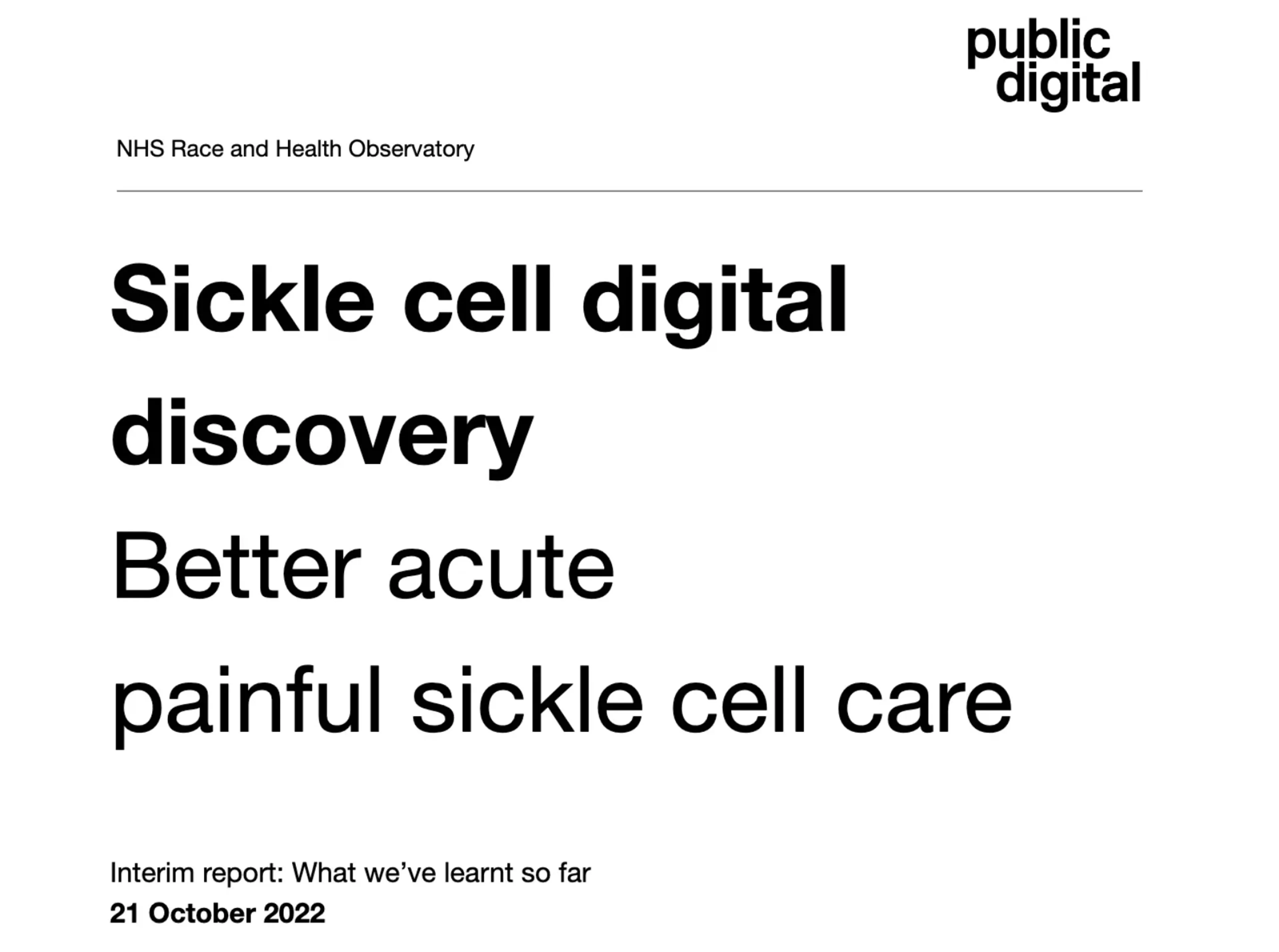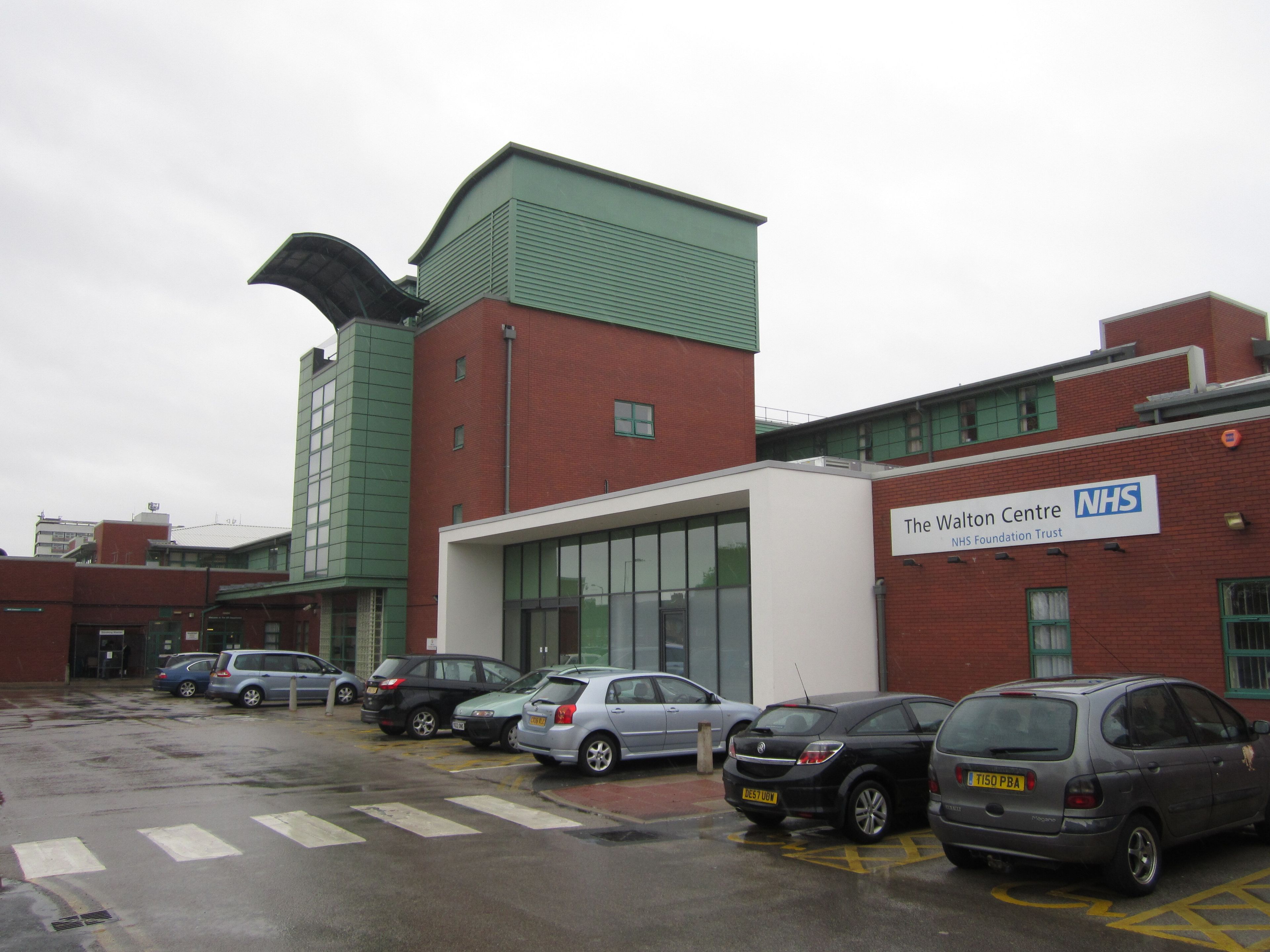
Sickle cell - Weeknote #7

17-21 October 2022
What have we been up to this week?
This week:
We drafted the first iteration of our discovery report!
We ran the last of our user research interviews with people with lived experience of sickle cell
We did a lot more analysis and synthesis of our user research data and identified a set of important observations
We restarted our digital and technology landscape review
The first iteration of our discovery report
We have written the first iteration of our discovery report. It covers:
Introduction: what we’re trying to do
Our methodology: what we’ve done so far
Our user research: what we have observed
Further observations
Our plan: what we’re going to do next
What further iterations of this report are likely to include
This is the very first version of what we have learnt so far, and we expect it to develop and change over the remainder of the discovery. We are sharing it openly and early, so that you can help review and shape the direction this work goes in.
You can read the first draft here. How well does what we have observed resonate with your experience? What are we missing? Has anything surprised you?
We would love to hear what you think.
To let us know, email connie@public.digital
Our user research interviews
On Monday, we spoke to 3 more people with sickle cell disease who shared their experiences of managing sickle cell and sickle cell crises with us. We have been utterly blown away by people’s willingness to participate in this research, and as we’ve worked on theming and summarising what we’ve learnt from speaking to you all, we are struck once again by how invaluable your openness, time and insight has been. Thank you.
What we have observed through our user research
Everything we have learnt so far has led us to a number of observations about the experience people have when they are having a sickle cell crisis. There are 7 which we feel are especially relevant in the moment of crisis:
Sickle cell patients often have additional needs which are not picked up on by healthcare professionals in the moment of crisis, meaning they must stay alert and monitor the treatment they are receiving.
Care plans are used inconsistently, and vary widely in their format and in how they are interpreted by patients and healthcare professionals, meaning they do not currently result in consistently good care.
Tracking the medication a sickle cell patient is taking is an arduous, daily task, and it becomes particularly difficult in the context of a painful crisis.
The way that A&E works is not designed for and does not meet the needs of sickle cell patients in crisis, leading to poor, painful experiences and a strong desire to avoid attending.
There is a stark imbalance between the level of mistrust people with sickle cell face, and the simultaneous pressure on them to manage much of their own care.
There is a persistent lack of communication and collaboration across healthcare professionals in hospitals and across different settings, which results in an administrative burden for people with sickle cell, and contributes to poor experience and treatment when in crisis.
Different people would like a different level of input from healthcare professionals in managing their condition day to day, and when they are in crisis.
These observations will inform the remainder of our discovery work, as we now turn our attention to exploring digital interventions which could help to address these challenges.
Digital and technology landscape review
If you’ve been following our work, you may remember that we intended to kick this review off sooner, but then made a decision to wait so that it could be informed by what we learnt from speaking to people with sickle cell. That being done, we have decided to start by focusing on developing our understanding of what is available currently:
That is specific to sickle cell disease
In the space of digital care plans
To help with medication tracking
To help with pain management
In the realms of wearable technology
We will explore these areas initially, and then we will decide whether to pursue them further or change our focus. We’ll keep you posted!

